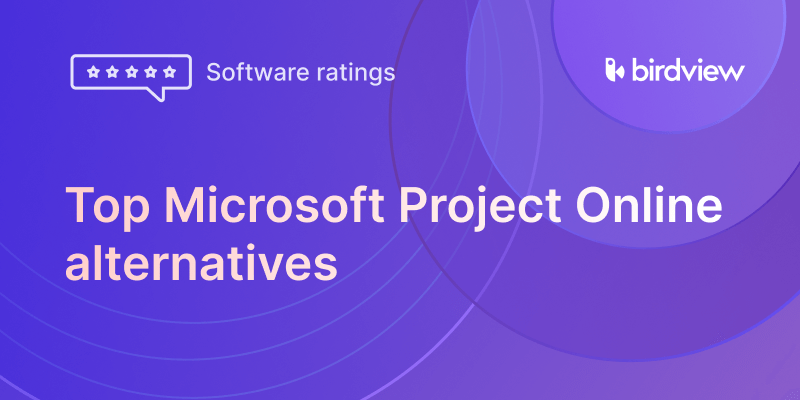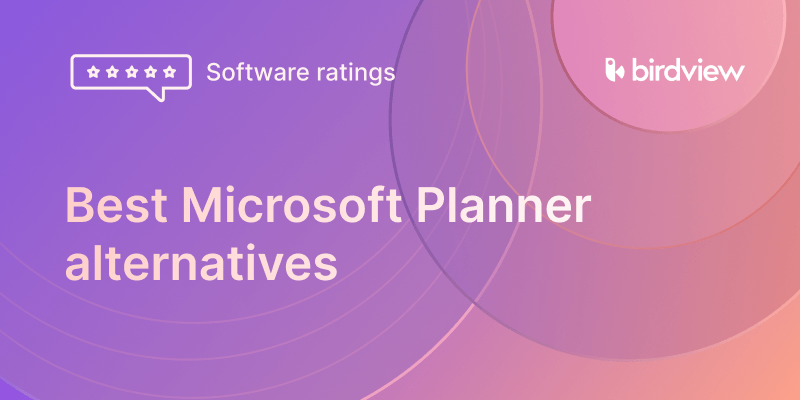So Microsoft pulled the plug on Project Online. If you’re reading this, you’ve probably already worked through the initial shock and are now facing the practical reality of migrating your projects, data, and team to a new platform. We’ve covered what MS Oultine retirement means for your organization, but here’s what often gets overlooked: the gap between planning a migration and actually pulling it off without damaging your operations. This article walks through the most common pitfalls we’ve seen during MS Project Online migrations, and more importantly, how to sidestep them entirely.
Pitfall #1: Rushing the migration without proper planning
There’s a deadline hanging over this whole thing, sure. Microsoft gave everyone a window, and that window is closing. But panic doesn’t make for good decisions.
We’ve watched companies treat this migration like a sprint when it’s actually a marathon. They skip the discovery phase, barely involve stakeholders, and just assume they can replicate their current setup in a new tool by next quarter. Then reality hits. The new platform works differently. Custom fields don’t map cleanly. Nobody thought about how resource management would translate. Six months later, they’re still fighting fires instead of managing projects.
Here’s the better approach: Start by actually understanding what you’re working with. Get your project managers, resource managers, and executives in the same room. What does success look like? What capabilities absolutely cannot be compromised? Who needs to sign off on this?
Build a realistic timeline that includes:
- A thorough assessment of your current setup (3-4 weeks)
- Vendor evaluation and selection (4-6 weeks)
- A proper pilot program (6-8 weeks)
- Phased rollout with training (8-12 weeks)
Yes, that’s 5-7 months. But that timeline assumes you’re not starting from scratch each phase; you’re building momentum. And more to the point, it assumes you’re doing this once. Rush it and you might find yourself doing it twice.
Quick tip: Assign a dedicated migration lead. This can’t be someone’s side project. They need time and authority to coordinate across teams, make decisions, and keep things moving.
Pitfall #2: Underestimating data migration complexity
Let’s talk about your data. You’ve got years of it in Project Online: tasks, dependencies, baselines, resource assignments, custom fields, and historical actuals. It’s the institutional memory of how work gets done in your organization.
Most teams assume this will just… transfer. Click a few buttons, maybe run a script, and boom: everything’s in the new system. Except it never works that way.
Different platforms structure data differently. What MS Project Online calls a “resource assignment” might be handled through three separate fields in your new tool. Your carefully crafted custom fields? They might not have direct equivalents. Dependencies and links between projects can break during migration. And if you’ve been using MS Project Online for several years, you’ve probably accumulated a fair amount of data debt: duplicate projects, inconsistent naming, outdated information that never got cleaned up.
What actually works: Treat data migration as its own project phase. Start with an audit. Export your current data structure and look at what you actually have. Identify:
- Which projects are active vs. archival
- What custom fields are truly essential
- How resource data is structured
- Where dependencies exist between projects
- What historical data do you genuinely need access to
Then map it out. Take your MS Project Online structure and explicitly document how each element translates to your new platform. Test this mapping with a single, representative project before you migrate everything.
And seriously, clean house first. Archive completed projects that don’t need to migrate. Standardize naming conventions. Fix data quality issues now, while you can still easily access everything in the old system.
Pitfall #3: Ignoring user adoption and change management
You can have the best project management platform in the world, but if your team won’t use it, you’ve just wasted everyone’s time and a substantial chunk of budget.
This is where a lot of migrations quietly fail. The technical migration goes fine. Data transfers. Integrations work. But three months later, people are still trying to access the old system (which no longer exists), or they’ve created workarounds using spreadsheets, or they’re just confused and frustrated.
The problem? Organizations treat this as a technology project when it’s actually a people project that happens to involve technology.
The fix starts early: Your change management strategy should begin before you even select a new platform. That means:
Identify your champions: those project managers who adapt quickly, who other people turn to for help, who genuinely care about improving how things work. Get them involved in vendor selection. They’ll become your evangelists later.
Develop training that matches how people actually work. Not generic vendor training, but role-specific content. What does a project manager need to know? What about a resource manager? An executive who just wants to see portfolio dashboards? Create different tracks.
Communicate constantly. Not just “we’re switching platforms” but why this matters, what’s in it for individual users, how their feedback is shaping the rollout. People resist change when they feel it’s being done to them rather than with them.
Here’s the often-overlooked part: plan for a productivity dip. Your team will be slower at first. Build that into your expectations and timelines. Support them with office hours, a dedicated help channel, and quick-reference guides. Make it easy to get help.
Quick tip: Create video tutorials that show common tasks from start to finish. A 3-minute screencast of “how to create a new project” is worth a dozen pages of documentation.
Pitfall #4: Selecting a tool that doesn’t match your workflow
Feature lists lie. Every platform claims to do everything. They all have Gantt charts, resource management, reporting. But the devil’s in the details: how those features actually work, whether they align with your team’s reality, if they’ll support the way you need to operate.
We’ve seen teams pick a platform because it checked every box in their requirements matrix, then discover it’s built for a completely different type of organization. Maybe it’s designed for software development teams using Agile, but you’re running construction projects. Or it’s perfect for simple task management but falls apart when you need multi-project resource leveling.
Here’s the smarter approach: Start with your actual workflows, not features. Document how projects flow through your organization today. How do they get initiated? Who approves what? How are resources allocated? Where do bottlenecks happen? What reports do executives actually look at?
Then (and this is critical) involve real users in evaluation. Not just the PMO director. Get the project managers who live in the tool daily into those vendor demos. Give them scenarios: “Show me how I’d handle a resource conflict across three projects” or “Walk me through creating our monthly portfolio status report.”
Use trial periods with real projects, not demo data. Assign a current project to the new platform and actually try to manage it there for a few weeks. You’ll discover friction points you’d never spot in a demo.
Key questions to ask:
- Can this handle our most complex project without manual workarounds?
- Does the reporting give us the views our stakeholders need?
- Will this work for both our expert PMs and our occasional users?
- How much customization will we need to make this fit?
Pitfall #5: Overlooking integration requirements
MS Project Online didn’t exist in isolation. It connected to SharePoint for documents, pulled into Power BI for reporting, integrated with Teams for collaboration, potentially linked to your time-tracking system or ERP. Those connections made your workflows possible.
Break those connections and you’ve just created a dozen manual processes that didn’t exist before. Your team will spend time copying data between systems, recreating reports, or worse: they’ll work around the new platform entirely to avoid the friction.
Map your integration landscape early. List every system that currently connects to or pulls data from MS Project Online:
- Where do project documents live?
- How do actuals and timesheets flow in?
- What systems need project data for billing or forecasting?
- How do stakeholders outside the PMO access project information?
Then evaluate how your new platform will maintain those connections. Native integrations are best: they’re supported, maintained, and usually reliable. API-based integrations work too, but someone needs to build and maintain them. That’s a cost and an ongoing commitment.
Pay particular attention to the Microsoft 365 ecosystem if you’re staying within it. Teams, SharePoint, and Power BI integrations can make or break user adoption. If people have to leave their daily workspace to update project status, they often just won’t do it.
Birdview maintains native integrations with Microsoft 365, Jira, Salesforce, and other common enterprise tools, which means you can preserve most of your existing workflows without custom development.
Pitfall #6: Failing to account for the total cost of ownership
The sticker price is never the whole story. Sure, you found a platform that costs $30 per user per month: sounds reasonable compared to Project Online. But what else comes with that?
Most organizations discover hidden costs after they’ve already committed:
- Migration services (because it’s more complex than expected)
- Additional training (beyond what the vendor includes)
- Integration development (to connect to your other systems)
- Premium features that turn out to be essential (but cost extra)
- Lost productivity during the learning curve
- Ongoing administration time (someone needs to manage this)
Then there are the less obvious costs. If the new platform requires more admin support, that’s headcount. If it doesn’t quite fit your processes, people will spend time working around limitations. If reporting isn’t built-in, someone’s building those dashboards.
Calculate a real TCO over 3-5 years. Include:
- Platform licensing (including expected growth)
- Migration costs (data transfer, consulting, your team’s time)
- Training (initial and ongoing for new hires)
- Integrations (building and maintaining them)
- Administration (the hours, not just tools)
- Support contracts if needed
- Opportunity cost of the transition period
Sometimes the more expensive platform is actually cheaper when you factor everything in. Better built-in features mean less customization. Stronger support means less internal troubleshooting. Easier user experience means faster adoption and less training overhead.
Pitfall #7: Not planning for governance and standardization
Project Online probably had some governance built up over time: templates that everyone used, naming conventions, standardized fields, approval processes. Maybe it wasn’t perfect, but it created consistency.
That all disappears during migration unless you actively recreate it. And we’ve seen what happens when you don’t: chaos. Everyone creates projects their own way. Reporting becomes impossible because data isn’t standardized. You can’t compare projects because they’re structured differently. Three months in, you’ve lost any sense of portfolio-level visibility.
Build governance before you launch. While you’re still in pilot phase, establish:
- Project templates that match your common project types. Include the standard tasks, phases, and custom fields that every project of that type needs. This enforces consistency and speeds up project initiation.
- Naming conventions for projects, tasks, and deliverables. Simple stuff, but it matters when you’re trying to find things or run reports.
- Data standards for how fields get populated. What does “Red” status mean? When should a project be marked complete? Who’s responsible for updating what information and when?
- Creation and approval workflows. Not every project should flow through the same path, but there should be a defined path. Who can create projects? What approvals are needed? When does a project idea become an actual project?
- Assign clear ownership. Someone needs to be the platform administrator: not just technically, but as a governance authority. They maintain templates, enforce standards, and make decisions about configuration changes.
Quick tip: Document your standards in a central location (SharePoint, a wiki, wherever your team already looks for this kind of thing). Include examples, not just rules.
Pitfall #8: Ignoring scalability and future needs
You’re solving for today’s problem: replacing MS Project Online. But smart organizations use this forced migration as an opportunity to set themselves up for the next five years.
That means thinking about where your organization is headed. Growing by 50% in the next two years? You need a platform that scales without exponential cost increases or performance degradation. Planning to expand into new methodologies like Agile or hybrid approaches? Make sure your tool can handle that flexibility.
Look at the vendor, not just the product. Are they financially stable? Do they actively develop and improve the platform, or has it been stagnant for years? What’s their track record with customer support as companies grow?
Evaluate scenarios beyond your current state:
- What happens if you double your project count?
- Can the platform handle more complex, interconnected projects?
- Will you need enterprise features as you grow?
- Does it support different project methodologies if your needs change?
- Can you add advanced features without migrating again?
This doesn’t mean you need an enterprise platform if you’re a mid-sized team. But it does mean understanding the platform’s ceiling. Where will it stop working for you? Is that ceiling far enough away to make this investment worthwhile?
Birdview serves both small and mid-size teams, as well as large enterprises, with the same platform, which means you won’t outgrow it as your organization scales. The pricing model adjusts with your growth without requiring platform changes.
Pitfall #9: Skipping the pilot phase
The biggest mistake might be the most common: migrating everyone at once. It feels efficient: rip off the band-aid, everyone suffers through the learning curve together, you’re done faster. Except when things go wrong (and they will), you’ve now broken project management for your entire organization simultaneously.
A pilot program is about testing your training, your processes, your change management, your data migration approach. It’s discovering problems while the stakes are still low.
Run a real pilot. That means:
- Pick 2-4 representative projects: different types, different complexity levels, involving both experienced PMs and newer ones. You want diversity to expose different use cases and skill levels.
- Give it time. Four to six weeks minimum. Long enough to encounter real situations: a project scope change, a resource conflict, and month-end reporting. Don’t just test the happy path.
- Gather structured feedback. Weekly check-ins with pilot users. What’s working? What’s frustrating? What’s missing? Where are the workarounds happening? Their insights will shape your training and rollout approach.
- Use pilot projects as proof points. When you roll out to the broader organization, you’ll have real success stories from their peers. “Here’s how the Phoenix project team used this feature to solve their resource crunch” resonates more than any vendor demo.
- Adjust before full rollout. Maybe your training needs to emphasize different features. Maybe you need to add a custom field everyone’s asking for. Maybe your templates need refinement. Fix this stuff now, not after you’ve onboarded 200 users.
What comes next
At this point, you’ve either already started evaluating alternatives or you’re about to. If you haven’t yet assessed what type of platform fits your needs, our comparison of MS Project Online alternatives breaks down the options by organizational type and use case.
The retirement of MS Project Online is forcing a change, sure. But forced changes often create opportunities to actually improve how things work, rather than just recreating what you had. The teams that come out ahead won’t be the ones who migrated fastest: they’ll be the ones who used this transition to build something better than what they’re leaving behind.



